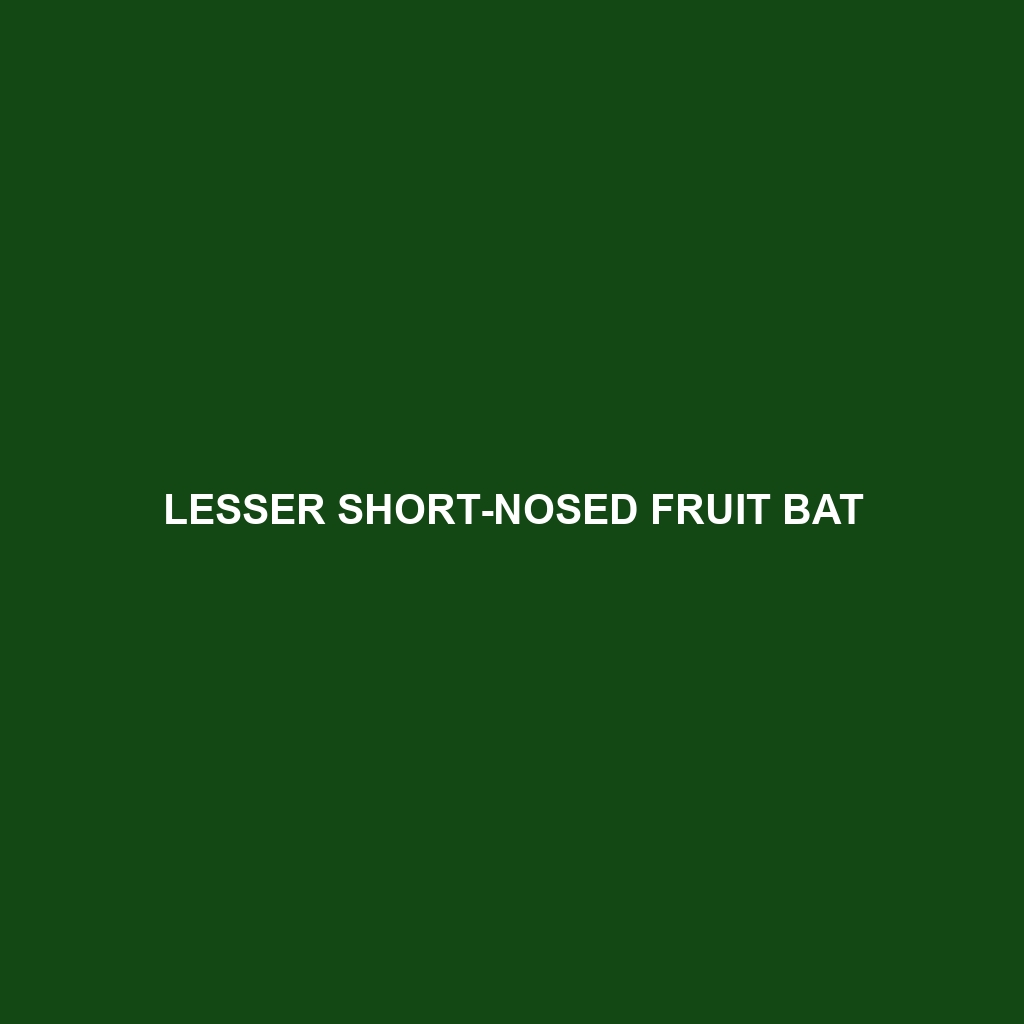Lesser Short-nosed Fruit Bat
Common Name: Lesser Short-nosed Fruit Bat
Scientific Name: ***Cynopterus brachyotis***
Habitat
The Lesser Short-nosed Fruit Bat is primarily found in tropical and subtropical regions of Southeast Asia. Its preferred habitats include forests, mangrove swamps, and urban areas where fruit-bearing trees are abundant. This species is particularly prevalent in countries such as Malaysia, Indonesia, and the Philippines, thriving in environments that provide ample foraging opportunities.
Physical Characteristics
The Lesser Short-nosed Fruit Bat is characterized by its medium size, typically measuring about 10 to 14 centimeters in body length with a wingspan of approximately 30 to 35 centimeters. These bats have short, broad snouts, which give them their name, and are covered in soft, brown fur with lighter underparts. Their large eyes provide excellent night vision, while their distinctive nose leaf—a fleshy structure on the snout—plays a crucial role in echolocation.
Behavior
Lesser Short-nosed Fruit Bats are predominantly nocturnal and exhibit social behavior, often roosting in groups. They demonstrate a strong level of site fidelity, returning to the same roosting locations. Their high level of activity during the night includes foraging for ripe fruits and nectar, making them a vital part of their habitat.
Diet
This species primarily feeds on a diet of fruits, particularly figs and guavas, as well as nectar from various flowers. Their feeding habits play a crucial role in seed dispersal, which aids in the regeneration of plant species in their ecosystem. Lesser Short-nosed Fruit Bats have a specific affinity for fruits that are rich in sugar, which provides them with the energy needed for their extensive nightly foraging flights.
Reproduction
The reproductive period for the Lesser Short-nosed Fruit Bat typically occurs during the dry season, with females giving birth to a single pup after a gestation period of approximately 110 days. The pups are born blind and hairless, relying entirely on their mothers for nourishment and protection. Maternal care is critical during the early months, as the mother bat carries the pup during foraging until it is mature enough to fly.
Conservation Status
The current conservation status of the Lesser Short-nosed Fruit Bat is classified as **Least Concern** by the International Union for Conservation of Nature (IUCN). However, their populations are impacted by habitat loss and degradation, particularly from deforestation and urban expansion, making continued monitoring essential.
Interesting Facts
– Lesser Short-nosed Fruit Bats are known for their vocalizations, which are critical for communication within roosts.
– They can consume up to 25% of their body weight in fruit each night, showcasing their significant feeding capacity.
– Their echolocation abilities are fine-tuned for detecting ripe fruits from considerable distances.
Role in Ecosystem
The Lesser Short-nosed Fruit Bat plays a critical role in its ecosystem as a pollinator and seed disperser. By feeding on fruits and nectar, they facilitate the growth of various plant species, promoting biodiversity. Their interactions with flora support the health of both their habitat and the broader environment, illustrating their importance within the ecological network.
